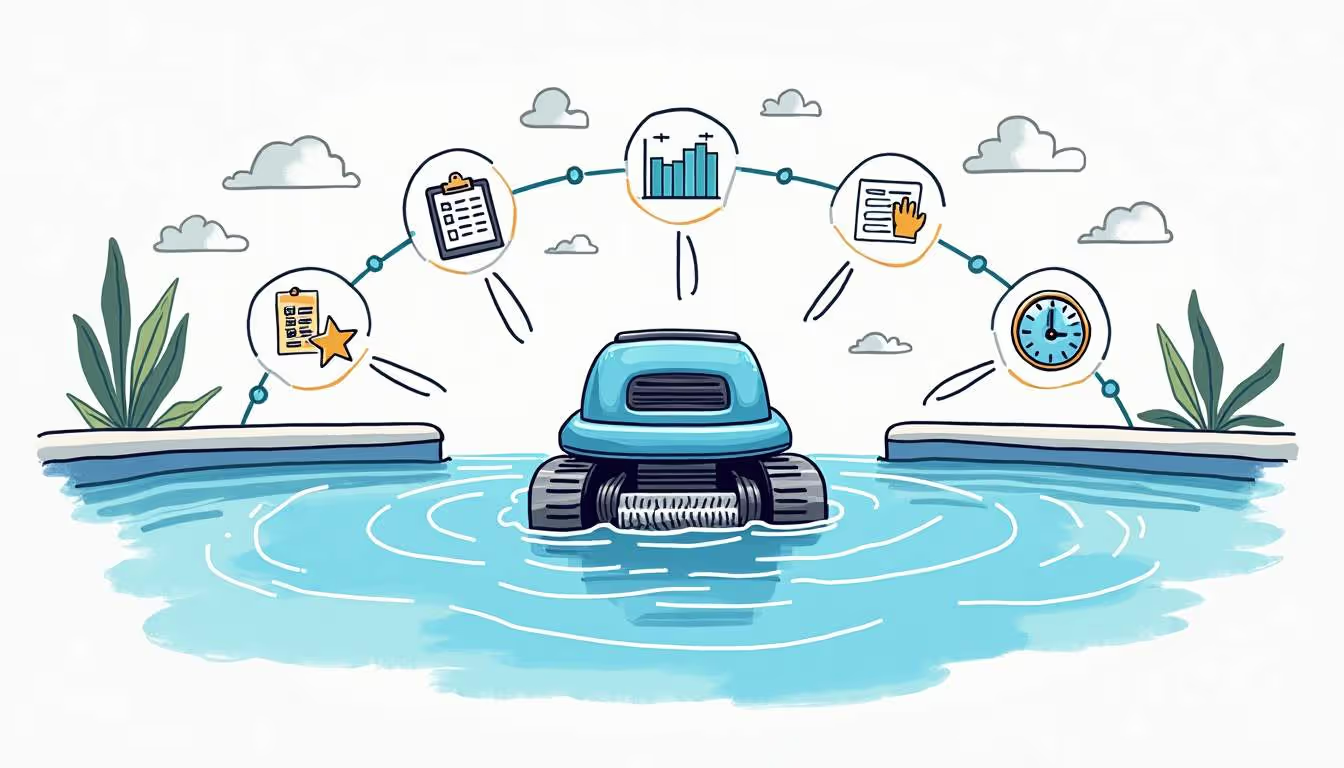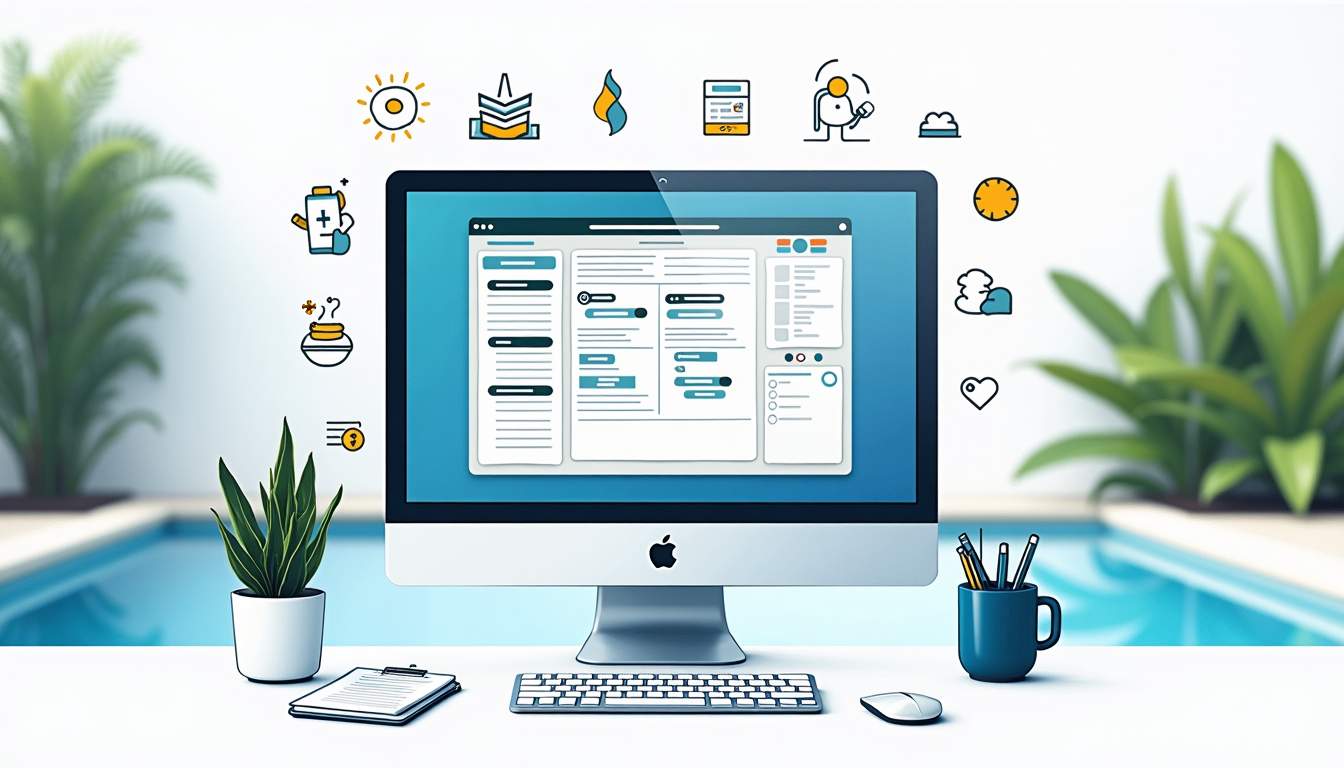Getting Started with Pool Service: A Beginner's Guide
Whether servicing a sparkling backyard oasis or maintaining a community pool visited by hundreds of swimmers a day, the modern pool professional must blend water chemistry, mechanical know-how, and excellent customer care into one seamless package. This guide breaks down the essentials of entering the pool-service field, from selecting durable vacuum heads to mapping routes that keep clients loyal season after season. Use these insights to sidestep costly beginner errors, sharpen operational efficiency, and deliver water clarity that markets itself. Every section reflects current industry data and battle-tested best practices, ensuring the learning curve stays short and margins stay healthy.
Understanding the Pool Service Landscape
Growth in the aquatic-leisure sector shows no signs of slowing. The Association of Pool & Spa Professionals reports that the United States now has more than 10.7 million residential pools, and roughly 309,000 commercial pools. Those figures translate into a projected compound annual growth rate of 5.2 percent for service activity through 2028. Motivators vary by region—some areas experience a housing-boom ripple effect, while warmer climates simply see longer swim seasons—yet the common thread is consistent demand for knowledgeable technicians who can keep systems safe, efficient, and compliant.
Because the market is fragmented, opportunity is plentiful. Independent operators handle an estimated 65 percent of weekly residential cleans, but larger regional brands are expanding through acquisition and technology-driven efficiencies. Newcomers who study local demographics, competitor pricing, and housing turnover rates can identify underserved pockets where word-of-mouth spreads quickly. Knowing the landscape helps set realistic revenue targets, prioritize certifications, and select service tiers that resonate with local expectations.
Moreover, the increasing focus on health and wellness has led to a surge in demand for high-quality pool maintenance services. Homeowners are becoming more aware of the importance of clean and safe swimming environments, which has resulted in a heightened emphasis on water quality testing and chemical balance. As a result, technicians who are well-versed in the latest water treatment technologies and eco-friendly practices are becoming invaluable assets in this evolving market. Additionally, the rise of smart pool technology, including automated cleaning systems and remote monitoring, is reshaping how services are delivered, offering both convenience and efficiency to consumers.
Furthermore, the integration of digital marketing strategies has transformed how pool service companies connect with potential clients. Social media platforms and online review sites play a crucial role in shaping consumer perceptions and driving business growth. Companies that actively engage with their audience through informative content, customer testimonials, and visually appealing posts can significantly enhance their visibility and reputation. As the industry continues to evolve, embracing digital tools and maintaining a strong online presence will be essential for both new entrants and established players aiming to thrive in this competitive landscape.
Essential Tools and Supplies
Every successful route starts with a properly stocked truck. A sturdy telepole, interchangeable nets, and a commercial-grade vacuum head form the backbone of manual debris removal. Pair those basics with a fine-mesh leaf canister to prevent pump clogging and a pH-resistant brush for tile lines. Test kits deserve special attention; digital photometers cost more upfront than reagent-block kits, yet deliver laboratory-level accuracy that reassures clients and minimizes chemical waste. According to a 2023 National Plaster Council survey, technicians using digital testing report 17 percent fewer chemical adjustments per visit.
Chemicals round out the must-have list. Stabilized chlorine tablets, sodium bicarbonate, calcium chloride, cyanuric acid, and algaecide cover 90 percent of routine balancing calls. Storage laws differ by jurisdiction, but most require oxidizers and acids to be separated by a minimum of ten feet or stored in fire-rated cabinets. Investing in spill-control kits and secondary containment trays protects the environment and demonstrates professionalism during surprise inspections.
In addition to these essentials, a reliable set of safety gear cannot be overlooked. Gloves, goggles, and masks are critical for protecting technicians from chemicals and debris. The right footwear, preferably slip-resistant and waterproof, ensures safety while working around wet surfaces. Moreover, having a first aid kit on hand is not just a best practice; it’s a necessity that can make all the difference in case of minor accidents or injuries on the job. Regularly checking and restocking this kit ensures that help is readily available when needed, fostering a culture of safety and preparedness.
Furthermore, technology plays an increasingly vital role in streamlining operations. Mobile apps designed for pool maintenance can help technicians track service history, schedule appointments, and manage inventory efficiently. These tools not only enhance productivity but also improve customer communication, allowing for real-time updates and reminders. By integrating technology into daily operations, businesses can elevate their service offerings, making them more appealing to clients who value transparency and responsiveness in their service providers.
Building a Service Routine
Consistency converts one-time cleanups into profitable contracts. A well-structured routine typically begins with a visual inspection: check water level, listen for cavitation noises, and scan for deck hazards. Next comes debris removal, followed by water testing and adjustment. Equipment checks—pump baskets, filter pressure, heater operation—precede a final polish of handrails and covers. When carried out in the same order every time, the entire sequence for a standard 15,000-gallon pool averages 22 minutes, according to field data gathered across 2,500 recorded stops in 2023.
Seasonal variations warrant procedural tweaks. In spring, pollen and dust demand more surface skimming; in winter, lower water temperatures slow chlorine consumption, allowing longer intervals between tablet replacements. Logging each reading and action in a cloud-based platform ensures trends are spotted early. If alkalinity drifts downward week after week, proactive sodium bicarbonate dosing prevents corrosive water from etching plaster and metal fixtures. Establishing this feedback loop demonstrates value beyond the visible sparkle and secures renewals.
Managing Customers and Expectations
The industry may revolve around pumps and chemistry, but retention hinges on communication. Clear service agreements prevent misunderstandings about visit frequency, chemical inclusions, and storm-related surcharges. Many operators now provide digital welcome packets summarizing recommended ranges—free chlorine at 2–4 ppm, pH between 7.4 and 7.6, and calcium hardness at 200–400 ppm—so homeowners know what technicians target during each visit. Transparency builds trust and curbs the impulse to self-dose with big-box chemicals that complicate balancing efforts.
Modern consumers also expect real-time updates. GPS-stamped completion reports—delivered by email or text—show arrival and departure times, before-and-after photos, and the day’s chemical additions. A recent Service Industry News poll revealed that 72 percent of pool owners who receive digital reports stay with their provider for at least three years, versus 48 percent who receive traditional door-hanger notices. Quick responsiveness to off-schedule questions—especially about cloudy water after a pool party—further distinguishes a service from transaction-based competitors.
Safety, Compliance, and Environmental Responsibility
Compliance is more than paperwork; it safeguards lives and reputations. Federal mandates such as the Virginia Graeme Baker Pool and Spa Safety Act require suction-entrapment prevention devices on commercial pools, and many municipalities extend similar rules to new residential builds. Failing to confirm that drain covers meet ANSI/APSP performance standards exposes both the customer and the technician to serious liability. Maintaining up-to-date certifications—Certified Pool Operator (CPO) or Aquatic Facility Operator (AFO)—demonstrates mastery of such regulations.
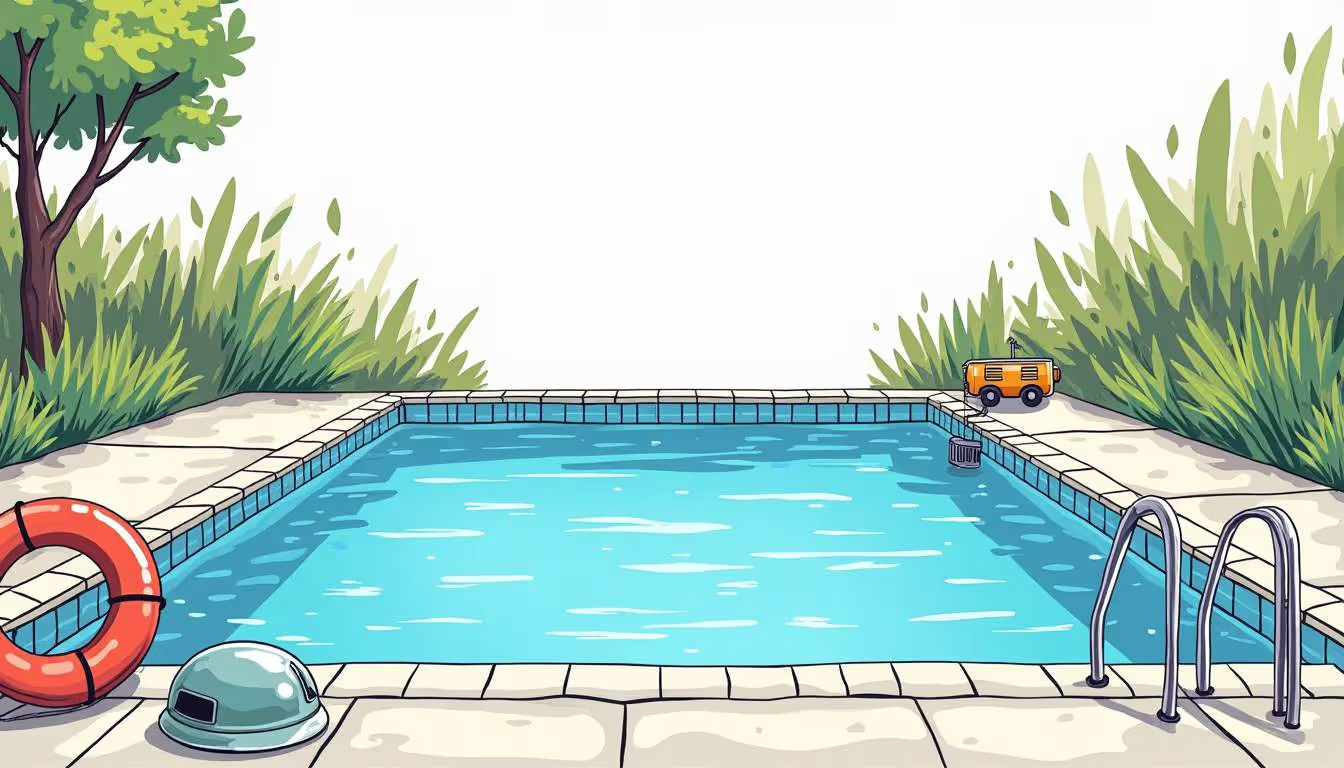
Environmental stewardship goes hand in hand with safety. Optimizing pump run times, installing variable-speed motors, and using enzyme-based clarifiers can slash chemical usage by up to 30 percent. Capture-and-reuse systems for filter-backwash water are gaining popularity in drought-prone regions. Highlighting these eco-friendly practices resonates with environmentally conscious homeowners and positions a company as a forward-thinking partner rather than merely a maintenance expense.
Leveraging Technology for Efficiency
Route optimization software has reshaped the economics of pool service. Algorithms consider traffic patterns, client availability windows, and technician skill sets to produce timetables that shave miles off daily driving. A case study of a 12-truck operation in Phoenix documented a 19 percent reduction in fuel costs and a 12 percent increase in completed stops within three months of implementing automated scheduling. Integrated inventory modules notify managers when chlorine stock dips below predetermined thresholds, preventing mid-week supply runs that derail productivity.
IoT-enabled equipment adds another layer of efficiency. Smart salt-chlorine generators, for example, transmit salinity and cell-life data directly to a technician’s dashboard, allowing remote diagnostics and timely part replacements. Leak-detection sensors can alert both homeowner and service provider at the first sign of water loss, cutting repair costs by an average of $890 per incident, according to insurance-claim analytics. When paired with mobile payment portals, these technologies create a frictionless experience that today’s digital-native customers increasingly demand.
Growing the Business Strategically
Scaling a service company requires balancing new-account acquisition with operational discipline. Referral programs remain the most cost-effective lead source—each satisfied customer can potentially influence five neighbors within the same subdivision. Offering complimentary 15-point start-up inspections or seasonal chemical credits incentivizes introductions without eroding core pricing. Meanwhile, partnerships with real-estate professionals yield steady move-in cleans that frequently become long-term contracts once homeowners settle.
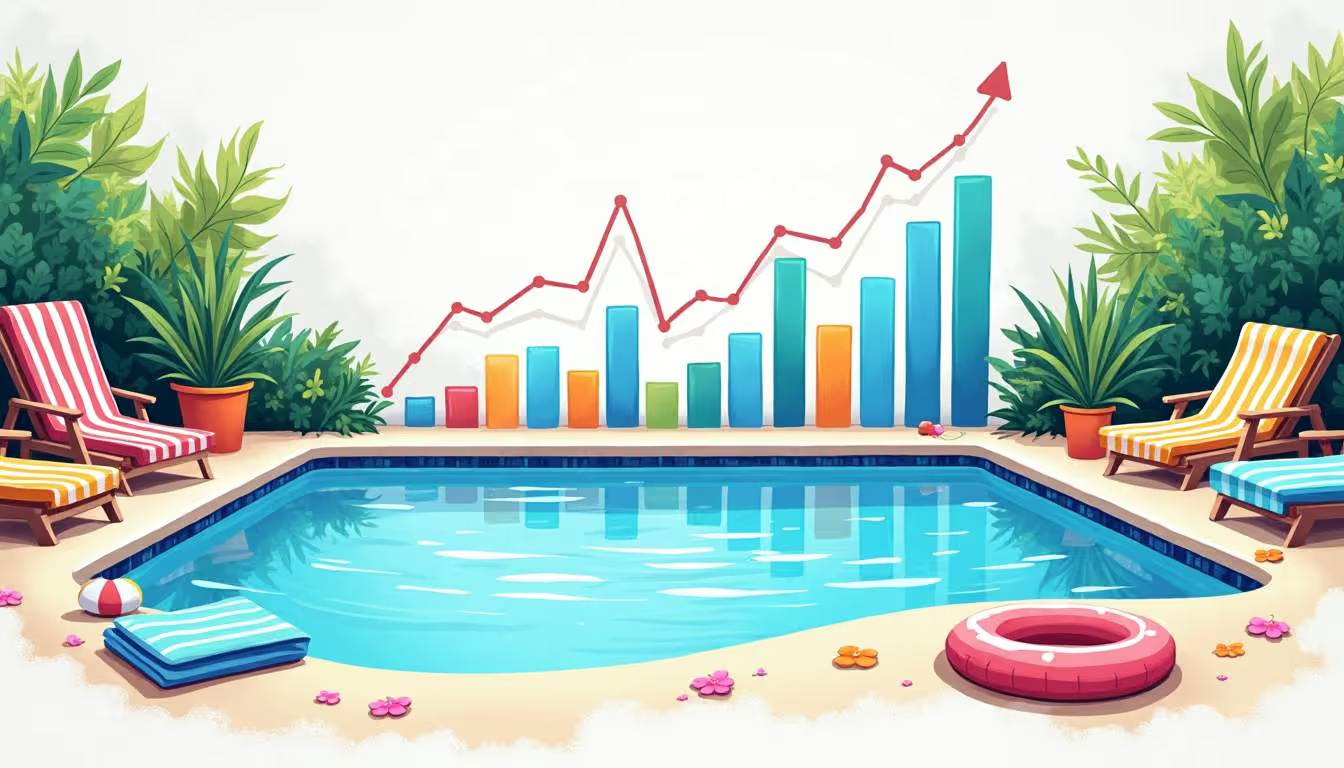
Diversification further stabilizes revenue. Equipment upgrades—such as energy-efficient pumps, automation panels, or LED lighting—command higher tickets and deepen customer relationships. Off-season add-ons like winter-cover installation, hot-tub maintenance, or holiday-light hanging keep crews busy year-round. By tracking profit margins and technician utilization within a robust field-service platform, owners identify which ancillary offerings justify the marketing spend and which dilute focus.
Final Thoughts: Turning Knowledge Into Action
Successful pool service combines science, craftsmanship, and impeccable communication. Understanding market dynamics informs price structures; investing in dependable tools and technology amplifies efficiency; and prioritizing safety and eco-responsibility sustains trust. Implement these cornerstones, and each carefully choreographed visit becomes part of a reputation-building narrative that customers will eagerly share with family, friends, and neighborhood forums.
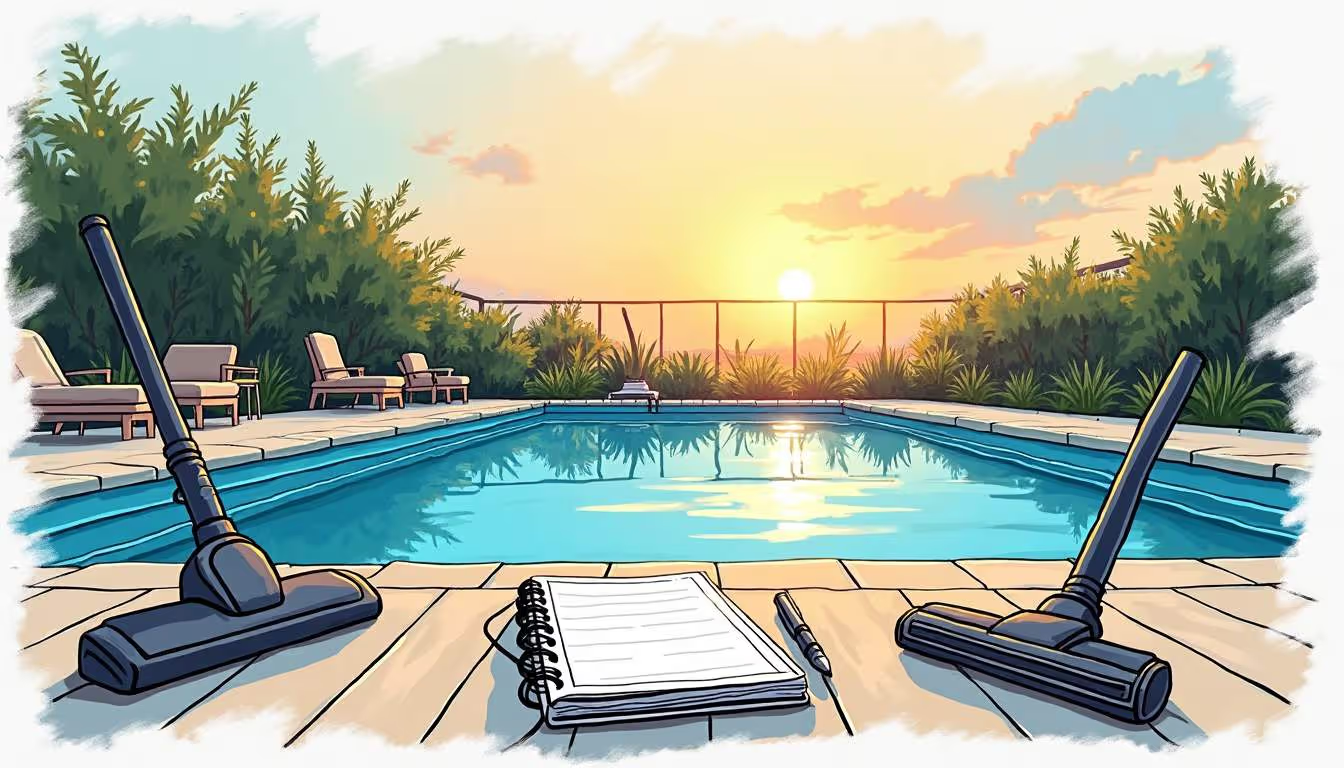
Starting may feel daunting, yet every industry leader began with a single route and a commitment to crystal-clear water. By following the guidance outlined above—rooted in current statistics, regulatory insights, and emerging tech trends—new entrants position themselves to thrive in a market that rewards consistency, transparency, and continual learning. The pool industry’s tide is rising; seize the momentum and dive in confidently.

